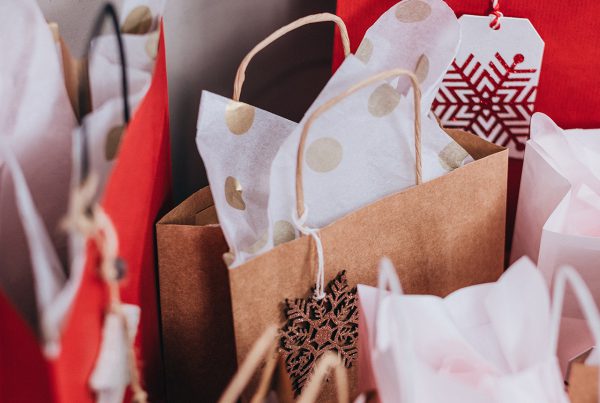We’re in an era where consumer demand is greater than it has ever been, particularly during promotional shopping periods. For instance, American consumers spent a record-breaking $6.2 billion on Black Friday (Nov. 23) this year, representing a 23.6 percentage increase over last year.
/cyber-monday.jpg)
The results from Single’s Day (Nov.11), a sort of equivalent to Black Friday in China, were even more impressive. On this day, China’s retail giant Alibaba achieved a record-breaking $30.8 billion sales in 24 hours, topping last year’s $25.3 billion sales figure.
Other periods in the year when shopping reaches high levels include Valentine’s Day, Easter, Mother’s Day, Father’s Day, and of course Christmas.
Why Supply Chain Management Is Vital
During peak shopping periods, it’s crucial for retailers of all sizes to make sure they have sufficient stock available to meet the enormous consumer demand. If shoppers go to a retailer on Black Friday and find that it doesn’t have the specific item they want, in their preferred color or size, the brand of that retailer could be damaged, and shoppers will quickly look to a competitor for the same or similar products; a risk that retailers cannot afford.
/distribution-center.jpg)
To make sure they can cope with peak shopping periods and have the right items in stock, retailers must have agile supply chain management procedures in place. The most important enabler of these is real time visibility of the entire supply chain all the way back to product conception.
Whether goods are still in the manufacturing process, in transit, in distribution centers or already in stores, retailers need to know where their products are in real time. It’s too late for retailers to find out in the middle of the Black Friday period that their products are not where they’re meant to be.
Real time visibility allows retailers to quickly recognize any issues in the supply chain that may undermine the timely delivery of products, enabling them to take decisive data-driven action to resolve those problems immediately.
The most effective way to acquire real time visibility is to use a digital supply chain management platform, such as Gravity Supply Chain Solutions, which provides live updates on the status of goods from product concept to destination. The Gravity platform is furthermore supported by 40,000 external data sources which instantly notify retailers of potential supply chain disruptions due to unforeseen factors such as extreme weather or port congestion.
Schedule a Gravity software demo to learn how it can provide you with real time visibility
In addition to real time visibility, retailers need clear communication lines with all their partners in the supply chain, including manufacturers and logistics providers, so that if problems arise in the supply chain, all involved parties can seamlessly communicate and work toward solving them. Unfortunately, communication channels between retail supply chain partners are often fragmented and spread across multiple spreadsheets or emails, making communication too slow to be effective.
Once again, a digital supply chain management system, such as Gravity Supply Chain, can be useful here, as the platform enables all supply chain partners to share and access information instantly on a single dashboard.
It follows from the above points that if retailers arm themselves with a digital supply chain management solution, they can be proactive and stay on top of their supply chains, ensuring they can capitalize on sales opportunities during peak shopping periods.
Unexpected Peaks In Shopping Demand
Of course, peaks in shopping demand do not always happen on predictable occasions, such as on Black Friday or Single’s Day. They can also occur at unpredictable times which can be difficult to see coming.
/supply-chain-stocks.jpg)
For example, something as seemingly trivial as what clothing item a celebrity is seen to be wearing on a particular day may all of a sudden generate a big spike in consumer demand for that item. In the U.K., Meghan Markle, the recent bride of Prince Harry, was spotted in July wearing a yellow dress at a Commonwealth event. In its annual retail report, the U.K. department store John Lewis revealed that it recorded a 401 percent increase in yellow dress sales over the past year as a result!
If an item unexpectedly surges in popularity, the retailers profiting are those that can make that item in sufficient quantities, and available in their stores as soon as possible. Their ability to do so hinges on their speed to market. Retailers with a slow speed to market in delivering popular items will lose sales opportunities to their rivals.
A digital supply chain management solution can help retailers significantly improve their speed to market, and thereby take advantage of unpredictable spikes in demand. Gravity Supply Chain, for instance, improves the speed to market of retailers by enabling them to access sourcing information, such as product catalogs, vendor profiles, quotes from suppliers, and shipping schedules, all from one dashboard; allowing retailers to quickly take the actions they need to get the products in store that consumers want now. As a result, the solution provides up to a 60 percent reduction of average cycle time from design brief to production.
By contrast, speed to market can become severely impaired if sourcing information is spread out across multiple documents, emails or spreadsheets, which is often the case with legacy, supply chain management solutions.
/powerful-analytics.png)
Learn about Gravity’s comprehensive Sourcing solution
Don’t fall behind
The ability of any retailer to make profits is highly contingent on their capacity to satisfy consumer demand, especially during peak shopping periods, which may be expected or unexpected. A digital supply chain management solution empowers retailers with the tools they need to satisfy consumers.
Does your retail business utilize a digital supply chain management solution that can help it stay on top of consumer demand? If not, you’re putting yourself in danger of losing market share to and falling behind your digitally-savvy competitors.




